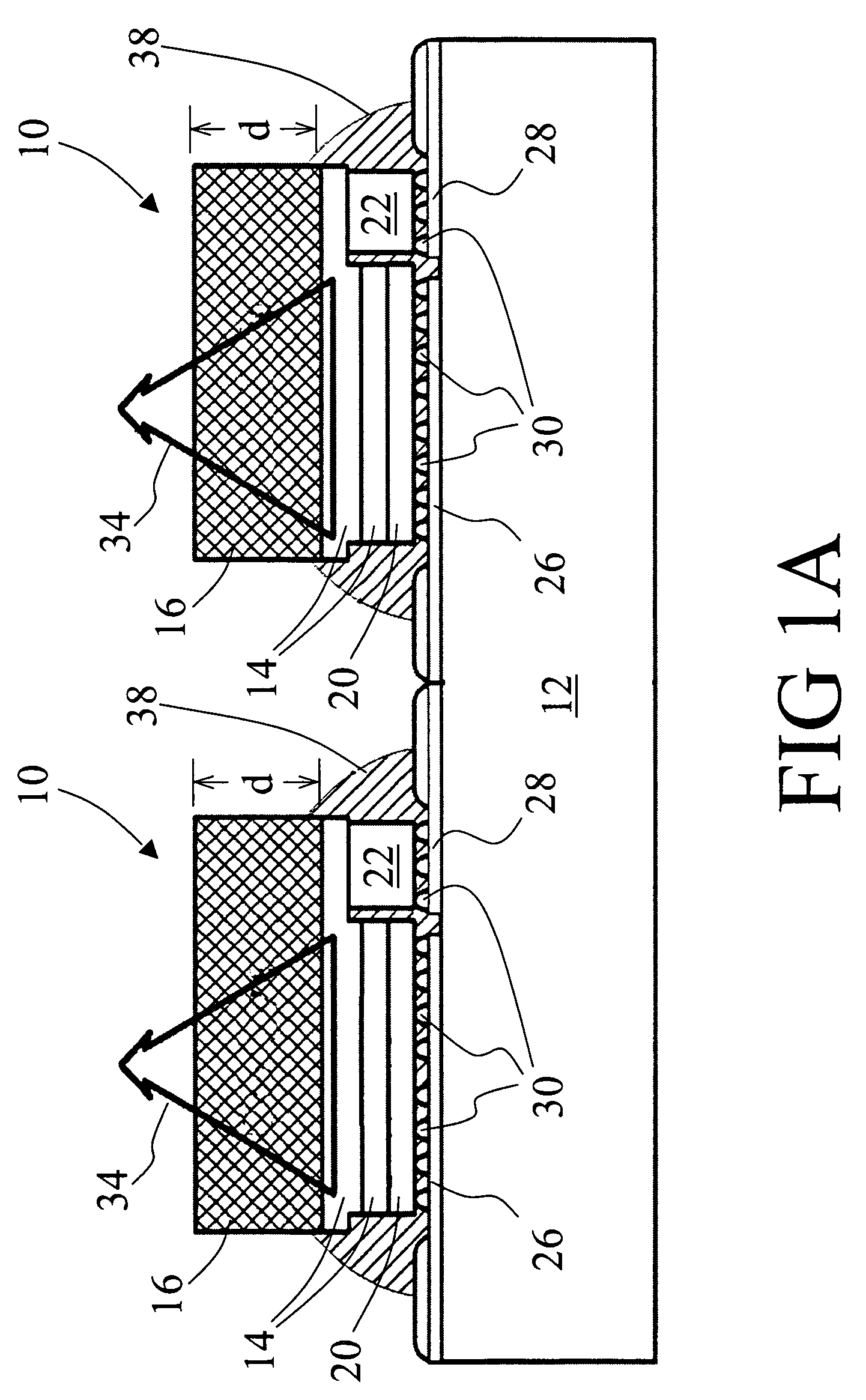Flip chip light emitting diode devices having thinned or removed substrates
a light-emitting diode and flip-chip technology, applied in the field of electronic arts, can solve the problems of compromising device yield, difficult to achieve intimate bonding between the epitaxial layer stack and the transparent substrate over large areas, and reducing the thickness of the growth substrate of the device di
- Summary
- Abstract
- Description
- Claims
- Application Information
AI Technical Summary
Benefits of technology
Problems solved by technology
Method used
Image
Examples
Embodiment Construction
[0020]With reference to FIG. 1A, two exemplary flip chip bonded light emitting diode device die 10 are shown mounted in flip-chip fashion on a mount 12. Each exemplary light emitting diode device die 10 includes a semiconductor device layers stack 14 that is epitaxially deposited on a growth substrate 16. The epitaxial device layers stack 14 defines a light emitting diode device such as a group III nitride ultraviolet or blue light emitting diode, a group III phosphide visible-emission light emitting diode, a group III arsenide vertical cavity surface emitting laser diode, or the like.
[0021]In FIG. 1A, the semiconductor layers stack 14 has two exemplary layers corresponding to a simple p / n diode; however, those skilled in the art will appreciate that more complex semiconductor layers stacks can be employed. In a vertical cavity surface emitting laser diode, for example, the layers stack can include dozens of layers that define Bragg reflectors, claddings, and a complex multi-quantum...
PUM
 Login to View More
Login to View More Abstract
Description
Claims
Application Information
 Login to View More
Login to View More - R&D
- Intellectual Property
- Life Sciences
- Materials
- Tech Scout
- Unparalleled Data Quality
- Higher Quality Content
- 60% Fewer Hallucinations
Browse by: Latest US Patents, China's latest patents, Technical Efficacy Thesaurus, Application Domain, Technology Topic, Popular Technical Reports.
© 2025 PatSnap. All rights reserved.Legal|Privacy policy|Modern Slavery Act Transparency Statement|Sitemap|About US| Contact US: help@patsnap.com



